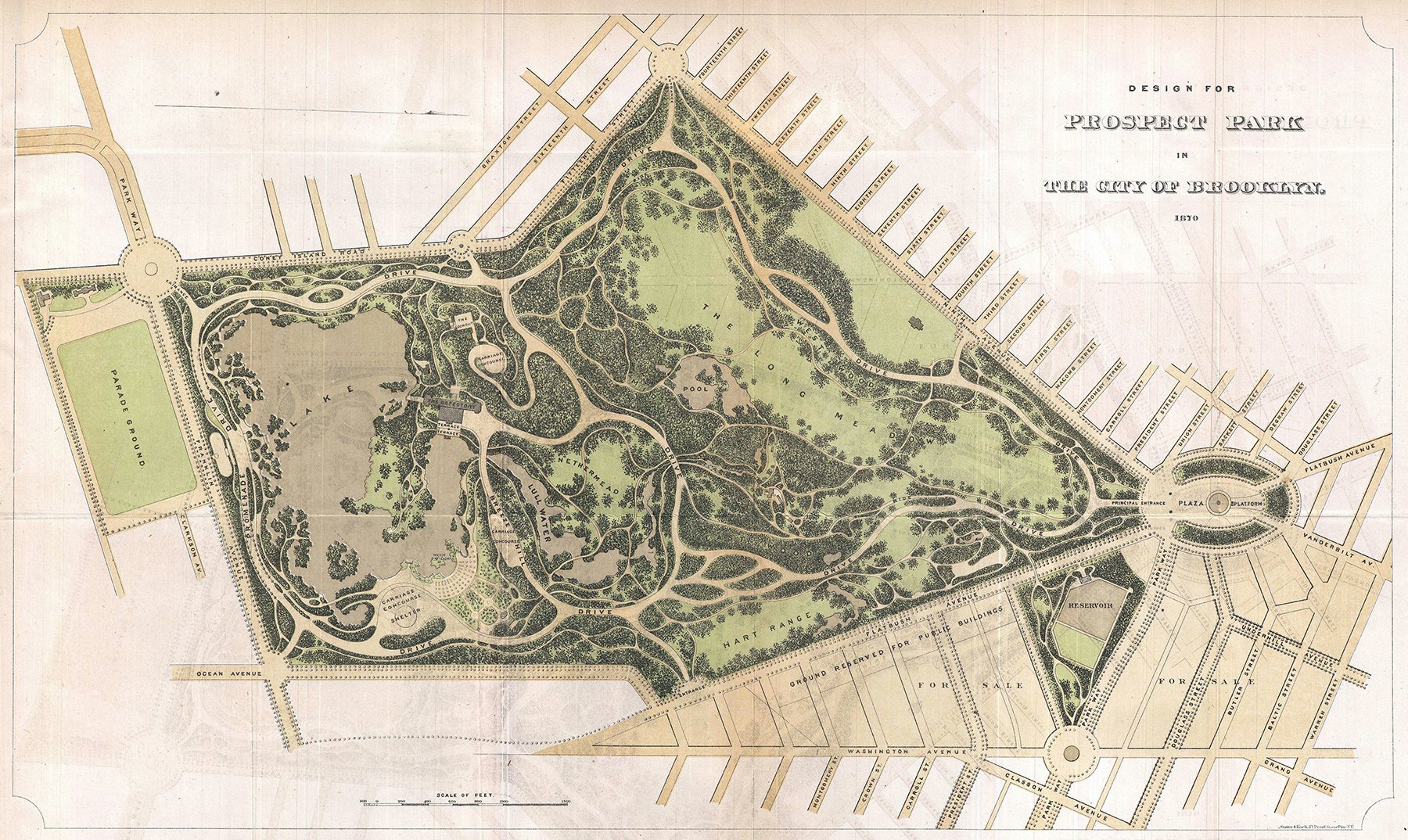A Proposal for an Observation Tower in Prospect Park
A proposed observation tower for Prospect Park, designed by Calvert Vaux circa 1865.
Prospect Park in Brooklyn is one of the great examples of landscape architecture in the United States. It was designed by the legendary landscape architects Frederick Law Olmstead and Calvert Vaux and was completed between 1867 and 1873. The pair were prolific collaborators, most famous for designing Central Park in New York City. Prospect Park is much like Central Park’s smaller sibling, sharing many design hallmarks. One such hallmark is a structure built on a high point in the park. In Central Park, this building is Belvedere Castle. In Prospect Park, a similar structure was planned, but unfortunately it never got built.
Pictured above is the original design for this structure. It was an observation tower, located at the top of Lookout Hill, which was the highest point in the park. The tower would be tall enough to reach above the trees and would command panoramic views of the surrounding city. At this height, the skylines of Brooklyn and Manhattan would be visible, along with Coney Island and New York Harbor.
Original design for Prospect Park by Calvert Vaux and Frederick Law Olmstead. The planned observation tower is located just below the kink in the perimeter road at the top of the drawing. It is the small square area just above the curling turnabout. Drawing from 1870.
Olmstead and Vaux were using verticality to enhance the experience of Prospect Park. By placing a tower at the highest point in the park, visitors could climb high above the city and view their surroundings from above. This accomplishes two goals. First, it increases a sense of place for those who climb the tower. Second, it provides a visible landmark for those nearby. The designers knew both of these, which is why they chose the highest point for the structure, and why they chose to build a tall tower on said site
Check out other posts about architecture and verticality here.


